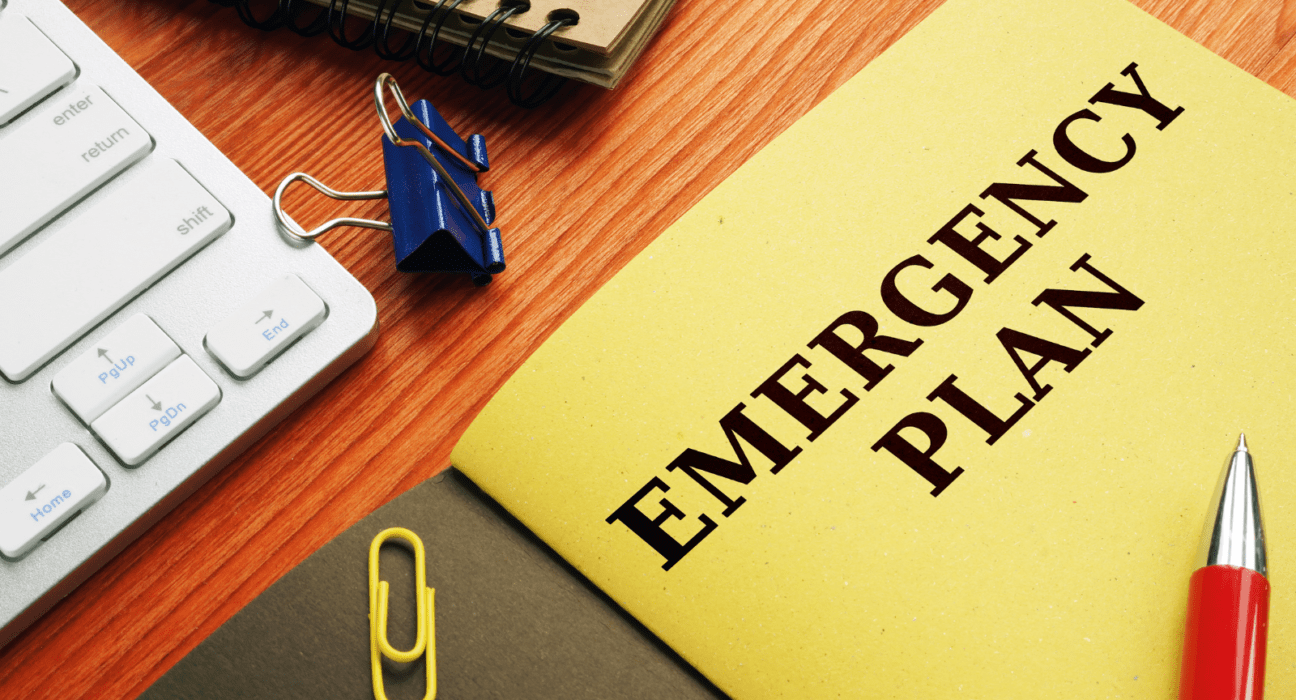When disaster strikes, whether it’s a hurricane like Hurricane Helen in the southeast or anything else, being prepared makes all the difference. Any business, big or small, needs a disaster plan and recovery strategy to keep things running, protect employees, communicate with customers and protect assets. Whether you have a small local store or a big company, the right steps will keep things moving and save your business.
1. Insurance: First line of defense
Insurance is key to reducing the financial impact of a disaster. Review your policy regularly to make sure it covers different types of disasters like storms, floods and power outages. Key policies to consider:
- Business Interruption Insurance: Covers lost income while your business is closed due to a disaster.
- Property Insurance: Protects physical assets like your building, equipment and inventory.
- Flood Insurance: If you’re in a flood prone area, especially near the coast, flood insurance is a must as most standard policies don’t cover flood damage.
- Cyber Insurance: If your digital systems are compromised during a disaster, cyber insurance can help you recover.
Work with an insurance advisor to get the right policies for your business.
2. Staff Safety: Top of the list
Your staff are the lifeblood of your business and their safety should be your number one priority during a disaster. Having a detailed emergency plan for your staff is crucial. Key elements:
- Emergency Contacts and Numbers: Every staff member should have a list of emergency contacts, local authorities, hospitals and family members.
- Evacuation Plans: Clearly communicate safe evacuation routes and meeting points. Do regular drills so everyone knows what to do in an emergency.
- Remote Work Options: If your business can operate remotely, make sure your staff has the tools and technology to work from home if the physical location becomes unsafe.
- Mental Health Support: Disasters can be traumatic. Offer mental health support or resources for your staff to help them cope with the aftermath.
3. Family Preparedness: Beyond the workplace
While businesses focus on staff safety, getting employees to have family disaster plans is just as important. Provide resources and information on personal emergency kits, family communication plans and local shelter locations so your staff is prepared at work and at home.
4. Communication during a crisis
Communication during a disaster can make or break a business. Keeping employees and customers informed is key to maintaining trust and a smooth recovery.
- Emergency Contact Lists: Have a current list of all staff, key vendors and customers. Make sure you have multiple ways to contact them, phone, email and text.
- Pre-written Templates: Have emergency communication templates to quickly notify your audience of closures, delays or safety instructions.
- Social Media: Use Twitter, Facebook or LinkedIn to update customers and stakeholders in real time.
- Satellite Phones: In areas where storms or other disasters can knock out traditional communication lines, satellite phones or two-way radios may be necessary.
5. Data and Backup: Paper vs Digital
When it comes to preserving important information, businesses need to have backup plans for both digital and physical documents.
- Digital Backup: Cloud storage should be the foundation of your disaster recovery plan. Make sure all critical files, customer data and operational systems are backed up regularly and stored securely online.
- Paper Backup: If your business relies heavily on physical documents (e.g. contracts, legal files), having paper copies stored in a fireproof and waterproof safe is a must. Consider scanning important documents and digitising them to reduce dependence on paper.
- Redundancy: Store digital backups in multiple locations, on-site and off-site. This way you’ll have access to your vital data even if your main office is damaged.
6. Power Outages: Business Continuity
Power outages are common during severe weather and can cripple a business if you’re not prepared. Here’s how to keep your business running during a blackout:
- Backup Generators: Invest in a backup generator to power essential systems like refrigeration, lighting and computer systems. Make sure it’s serviced regularly and ready to go in an emergency.
- Uninterruptible Power Supplies (UPS): UPS systems provide temporary power to critical devices like computers and servers, giving you time to shut them down safely or switch to a backup power source.
- Battery Backup: Have extra batteries and portable chargers for phones, radios and other devices your team may need during a power outage.
7. Inventory and Assets
Your inventory is an investment and protecting it during a disaster will help minimize financial loss. Here’s what to do:
- Waterproof Containers: Store sensitive items, documents and electronics in waterproof containers to prevent water damage during storms or flooding.
- Elevate Inventory: If you’re in a flood prone area, elevate your inventory or critical equipment above flood levels.
- Emergency Supplies: Stock up on essential supplies like tarps, sandbags and plastic sheeting to cover equipment and seal vulnerable areas before a storm hits.
8. Customer Communication and Trust
Building and maintaining trust with your customers is key during a disaster. Open and transparent communication will keep customers loyal even when your business is affected. Here’s how:
- Customer Alerts: Use email newsletters, social media or SMS to notify customers of changes to business hours, delays or closures.
- Offer Help: If you can, provide resources or support to your customers during the crisis, whether through extended customer service hours or temporary solutions.
- Post-Disaster Marketing: Once operations are back up and running, consider sending a thank you email, with a promotion or discount as a way of saying thank you to customers for their patience during the recovery phase.
9. Technology and Business Continuity Plans
In today’s digital age most businesses rely heavily on technology. A disaster recovery plan should include strategies for your technological assets:
- Remote Access: Ensure employees have remote access to critical systems and data if they can’t get to the office.
- Off-Site Backup Systems: Having off-site servers or cloud-based systems will get you back up and running quickly if your primary systems are damaged.
- IT Support: Make sure you have a reliable IT team or partner to help with system recovery and troubleshooting.
10. Long-Term Recovery
Once the immediate danger has passed the long haul to recovery begins. This phase requires planning and management and the ability to adapt to changing circumstances.
- Financial Recovery: You may need to take out loans, apply for government disaster relief programs or use savings to recover. Make sure you have a financial buffer or plan in place to support your business through the recovery phase.
- Business Continuity: Review your long term business continuity plan and adjust it based on what you learned from the disaster. This may mean changing supply chains, securing better insurance or upgrading physical infrastructure.
- Employee Morale: The post disaster phase can be mentally and emotionally tough for employees. Offer support, check in regularly and provide flexibility as they manage work and personal recovery.
Plan Ahead
Disasters are going to happen but being proactive in your planning and preparation will minimize the impact on your business. Whether it’s buying insurance, installing a backup power system or creating a communication plan, every step you take will protect your staff, your customers and your business.
By having a solid disaster planning and recovery strategy your business will weather the storm – literally and figuratively – and be ready to rebuild and continue serving your community.
Related articles:












